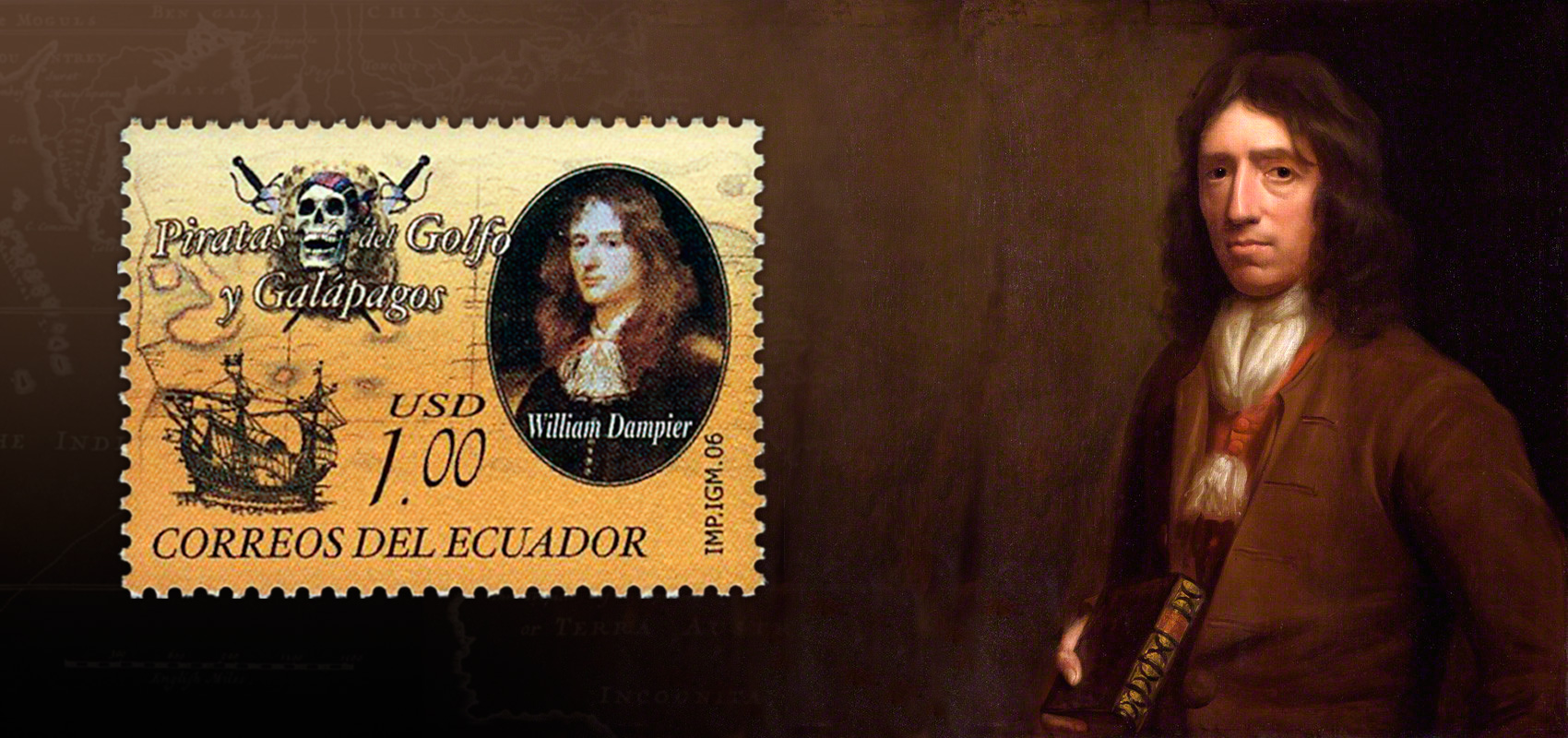The Pirate Naturalist
Talented navigator, diligent observer, and bad-boy buccaneer, William Dampier may be the most accomplished travel writer and naturalist you’ve never heard of.
Article body copy
Postage stamps are lessons in history, politics, science, or geography packed onto a small piece of gummed paper. They’re also beautiful works of art. In Stamped we’re going coastal, with postal.
William Dampier lay in the grass studying a flock of flamingos, carefully noting their morphology, nest structure, and behavior. Then, he and two companions picked up their guns and shot 14 of the leggy pink birds. One, he ate. The flesh, Dampier later recounted, was lean, black, and savory, with the tongue being particularly tasty and fit for a prince’s table.
Dampier watched the flamingos in 1683 when anchored off Sal, one of the Cape Verde Islands. Making a meal of whatever beasts were available—iguana, manatee, all manner of birds—was not unusual for sailors, but few paused to take detailed natural history notes before dining. And it was especially out of character for a pirate.
In the late 1600s, Dampier (1651–1715)—part-time pirate, one-time human trafficker, all-the-time observer—was living the dream. It was an era when skilled sailors prowled the seas, their talents employed for noble or nefarious ends. During his seafaring life, Dampier crewed on merchant ships, marauded with buccaneers and privateers, and commanded an expedition for the British Admiralty. Combined, these voyages enabled Dampier to circumnavigate the world three times. Through it all, he was the consummate naturalist, taking detailed notes of animals, plants, winds, currents, and the people he encountered. He compiled his observations on natural history and ethnography in four volumes that transformed the nascent genre of travel literature.
Dampier’s first book, A New Voyage Round the World, was published in 1697 and recounted his first circumnavigation, a 12-year epic during which he crewed and/or pirated on a string of ships. (It was on this journey that Dampier acquired Prince Jeoly, a heavily tattooed man from the Philippines. His plan was to display his “painted prince” as a curiosity, but, once back in England, Dampier found himself short of cash and sold Jeoly off, one share at a time, until all his financial interest in the man was gone.)
A New Voyage made Dampier a celebrity. His timing was excellent; this was an era of exploration, when countries vied to chart unexplored territories, searching for resources, conquests, and descriptions of terra incognita. Dampier’s detailed and entertaining writings were spiced with piratical exploits, which thrilled readers, but the scientific information he included was most enduring.
Taken together, Dampier’s writings formed a treatise on weather, hydrography, and oceanography, and his detailed descriptions of natural wonders in distant lands inspired some of the greats in science, exploration, and literature. Captain James Cook, for instance, used Dampier’s maps of winds and currents, and Charles Darwin included Dampier’s books in his library on The Beagle. Even the English language benefited from Dampier’s detailed observations—he contributed hundreds of words to the Oxford English Dictionary, including avocado and barbecue.
Dampier never became wealthy from his exploits at sea or the words he penned, but his observations on natural history formed a formidable base of knowledge for the scientists and mariners of the following centuries.

